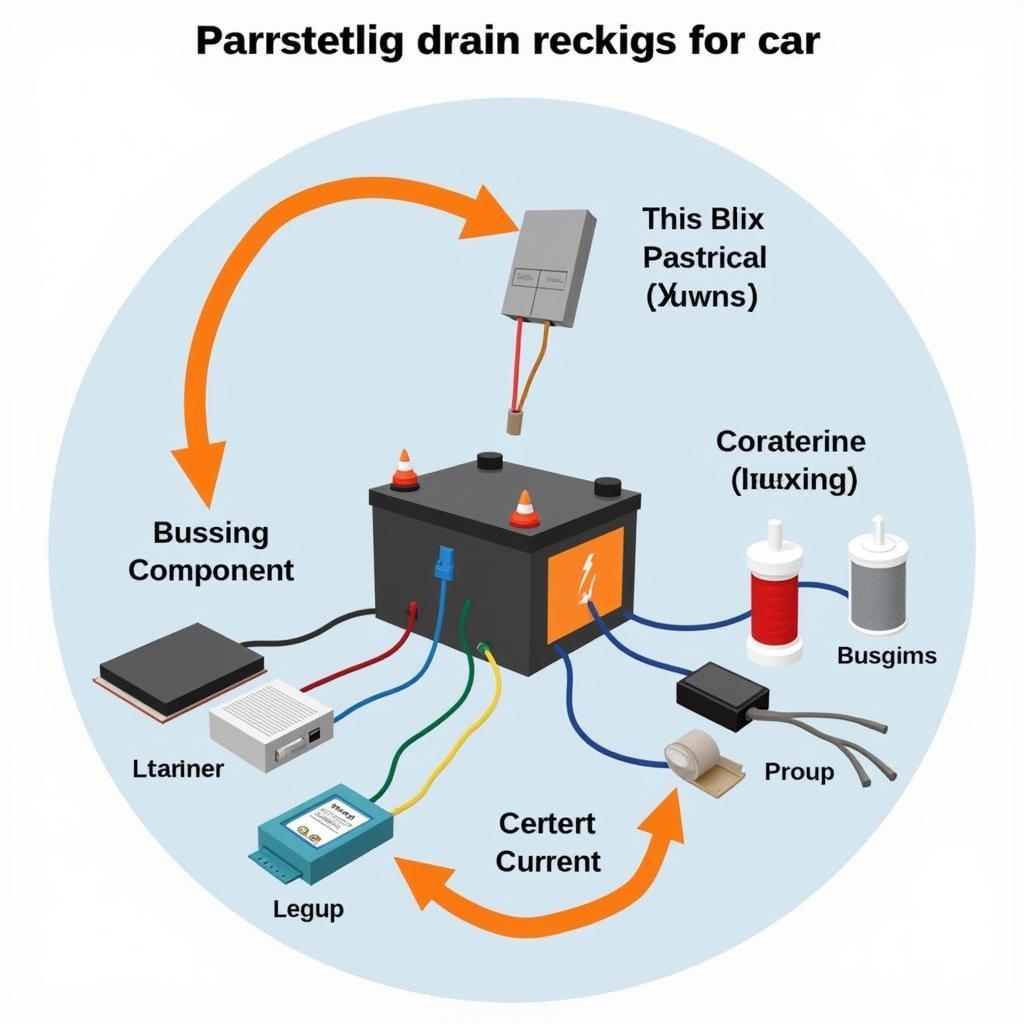Experiencing an illuminated brake light warning on your Audi A4’s dashboard can be unsettling. This warning signal, often accompanied by a chime, indicates a potential issue with your braking system that requires immediate attention. While it may not always signify a complete brake failure, ignoring it could compromise your safety and lead to costly repairs.
This comprehensive guide will delve into the common causes of an Audi A4 brake light warning and provide you with potential solutions to get you back on the road safely.
Understanding Your Audi A4 Brake Warning System
Before we jump into the causes, it’s crucial to understand how your A4’s brake warning system works. The system is designed to alert you of various issues, including:
- Worn Brake Pads: One of the most frequent triggers for the warning light is worn brake pads. Your A4 is equipped with sensors that monitor pad thickness. When the pads wear down to a certain level, the sensor triggers the warning light on your dashboard.
- Low Brake Fluid Level: The brake warning light can also illuminate if the brake fluid level in the reservoir drops below a safe level. This usually indicates a leak in the braking system, which needs immediate attention.
- Malfunctioning ABS System: Your Audi A4 is equipped with an Anti-lock Braking System (ABS). If the ABS module detects a fault within the system, it can trigger the brake warning light.
- Faulty Brake Light Switch: The brake light switch is responsible for activating your brake lights when you press the pedal. A faulty switch can lead to the brake lights not working correctly and trigger the warning light.
Common Causes of an Audi A4 Brake Light Warning and How to Troubleshoot Them
1. Worn Brake Pads
Symptoms: Squeaking or grinding noise when braking, reduced braking performance, and an illuminated brake warning light.
Troubleshooting:
- Check your brake pads visually. If you see less than ¼ inch of friction material, it’s time for a replacement.
- Consult your owner’s manual for the recommended brake pad replacement interval for your specific Audi A4 model.
Solution: Replacing your brake pads is crucial for maintaining optimal braking performance and safety. It’s recommended to have your brake pads inspected by a qualified mechanic, especially if you’re not comfortable doing it yourself.
2. Low Brake Fluid
Symptoms: Illuminated brake warning light, spongy or soft brake pedal feel, and longer stopping distances.
Troubleshooting:
- Check your brake fluid level. Locate the brake fluid reservoir under the hood, typically a translucent container with a “Min” and “Max” marking. Ensure the fluid level is within the recommended range.
- Inspect for leaks. Look for any signs of brake fluid leaks around the master cylinder, brake lines, and calipers.
Solution: If the brake fluid level is low, carefully top it off with the correct DOT specification as recommended in your owner’s manual. If you notice leaks, it’s essential to have your braking system inspected and repaired by a qualified mechanic immediately.
3. ABS System Malfunction
Symptoms: Illuminated brake warning light, ABS warning light illuminated, and potential issues with ABS functionality.
Troubleshooting:
- Check for diagnostic trouble codes (DTCs). You can use an OBD-II scanner to read any stored codes related to the ABS system.
- Consult a mechanic. Diagnosing and repairing ABS system faults often require specialized tools and expertise.
Solution: Addressing ABS issues usually involves replacing faulty sensors, control modules, or other components. It’s best to consult a qualified mechanic for accurate diagnosis and repair.
2008 audi a4 brake warning light
4. Faulty Brake Light Switch
Symptoms: Brake lights not illuminating when the pedal is pressed, cruise control malfunction, and an illuminated brake warning light.
Troubleshooting:
- Inspect your brake lights. Have someone press the brake pedal while you check if all the brake lights are functioning correctly.
- Test the brake light switch. This usually involves accessing the switch above the brake pedal and testing for continuity with a multimeter.
Solution: Replacing a faulty brake light switch is a relatively straightforward repair. You can find replacement switches online or at your local auto parts store. However, if you’re not comfortable with DIY repairs, it’s best to have it replaced by a professional.
Frequently Asked Questions about Audi A4 Brake Light Warning
Q: Can I still drive my Audi A4 with the brake light warning on?
A: While you might be able to drive for a short distance, it’s highly discouraged. Driving with a compromised braking system puts you and others at risk.
Q: How much does it cost to fix an Audi A4 brake light warning?
A: The repair cost varies widely depending on the underlying cause. A simple brake pad replacement can cost a few hundred dollars, while ABS module replacement can be significantly more expensive.
audi a4 brake warning light flashing
Q: How often should I check my Audi A4’s brake fluid?
A: It’s recommended to inspect your brake fluid level at least once a month and top it off if necessary.
Q: Can a faulty parking brake trigger the brake light warning?
A: While less common, a faulty parking brake switch or sensor can trigger the warning light on some Audi A4 models.
Q: What should I do if the brake warning light comes on intermittently?
A: Don’t ignore an intermittent warning light. It still indicates a potential issue with your braking system that requires professional diagnosis.
Keeping Your Audi A4 Safe and Reliable
Addressing an Audi A4 brake light warning promptly is crucial for your safety and the longevity of your vehicle. Regular brake system maintenance, including timely pad replacement, fluid checks, and addressing any warning lights, will go a long way in ensuring your Audi A4’s braking system remains in top condition for years to come.

